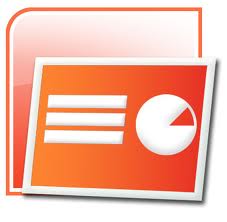The Skeletal System
The skeletal system is the first unit within anatomy & physiology that the sheer amount of terms and structures becomes clear. Many students will be familiar with the larger bones, but the smaller ones and their parts will often be brand new. This unit, along with the muscular system, will place a great deal of emphasis on maintaining body shape and movement.
The Skeletal System Lecture Powerpoint
 |
Purpose: This Powerpoint lecture begins by looking at the different types of bones within the body, how they are classified, and what they do. Students will then learn about the inner anatomy of bones, going all the way to the cellular level. Once each of the human bones is identified, students will then learn how they are joined together and what types of movements are produced from them.
Essential Concepts: Spongy bone, compact bone, osteocytes, types of bones, fontanels, sinuses, axial skeleton, appendicular skeleton, types of joints, bone fractures.
Skeletal System Student Notes Outline
Purpose: Taking efficient notes can be a big challenge for many students, especially when working from a Powerpoint lecture. This outline gives students a means to take notes that guides them toward important concepts and avoids the pitfalls of writing word-for-word or simply not taking notes at all. The outline lays out each of the key concepts, ideas, and blank diagrams that students are expected to learn. They fill in the missing details as the lecture proceeds.
Essential Concepts: Spongy bone, compact bone, osteocytes, types of bones, fontanels, sinuses, axial skeleton, appendicular skeleton, types of joints, bone fractures.
Assembling the Skeletal System Activity
Purpose: This activity provides students an opportunity to assemble the skeletal system themselves, starting with a randomly arranged complete set of human bones. This activity is a revised version of one available in an out-of-print edition of A.D.A.M. Education.
Essential Concepts: Axial skeleton, appendicular skeleton.
Bone Classification Coloring Activity
Purpose: A good way to practice classifying the different types of bones is to simply look at the full human skeleton and start identifying which category each belongs in. This activity gives students a comple skeleton, which they have to color-code based on the four major types of bones: short bones, long bones, flat bones, and irregular bones.
Essential Concepts: Bone classification, short bones, long bones, flat bones, irregular bones.
Comparative Anatomy of the Skeletal System Activity
Purpose: This extension activity has students compare the size and shapes of bones within the human body to those of familiar animals. Students will attempt to relate the differences in skeletal structure to the different types of movements or lifestyles adapted by those animals. This is a good way to relate skeletal anatomy to concepts of evolution.
Essential Concepts: Axial skeleton, appendicular skeleton, evolution.
Skeletal System Study Guide
Purpose: This study guide is a condensed listing of the major vocabulary words from this chapter, along with a set of practice questions and diagrams similar to what might be on a written test. The questions and vocabulary are roughly written in the same order as they appear in the lecture.
Essential Concepts: Spongy bone, compact bone, osteocytes, types of bones, fontanels, sinuses, axial skeleton, appendicular skeleton, types of joints, bone fractures.
